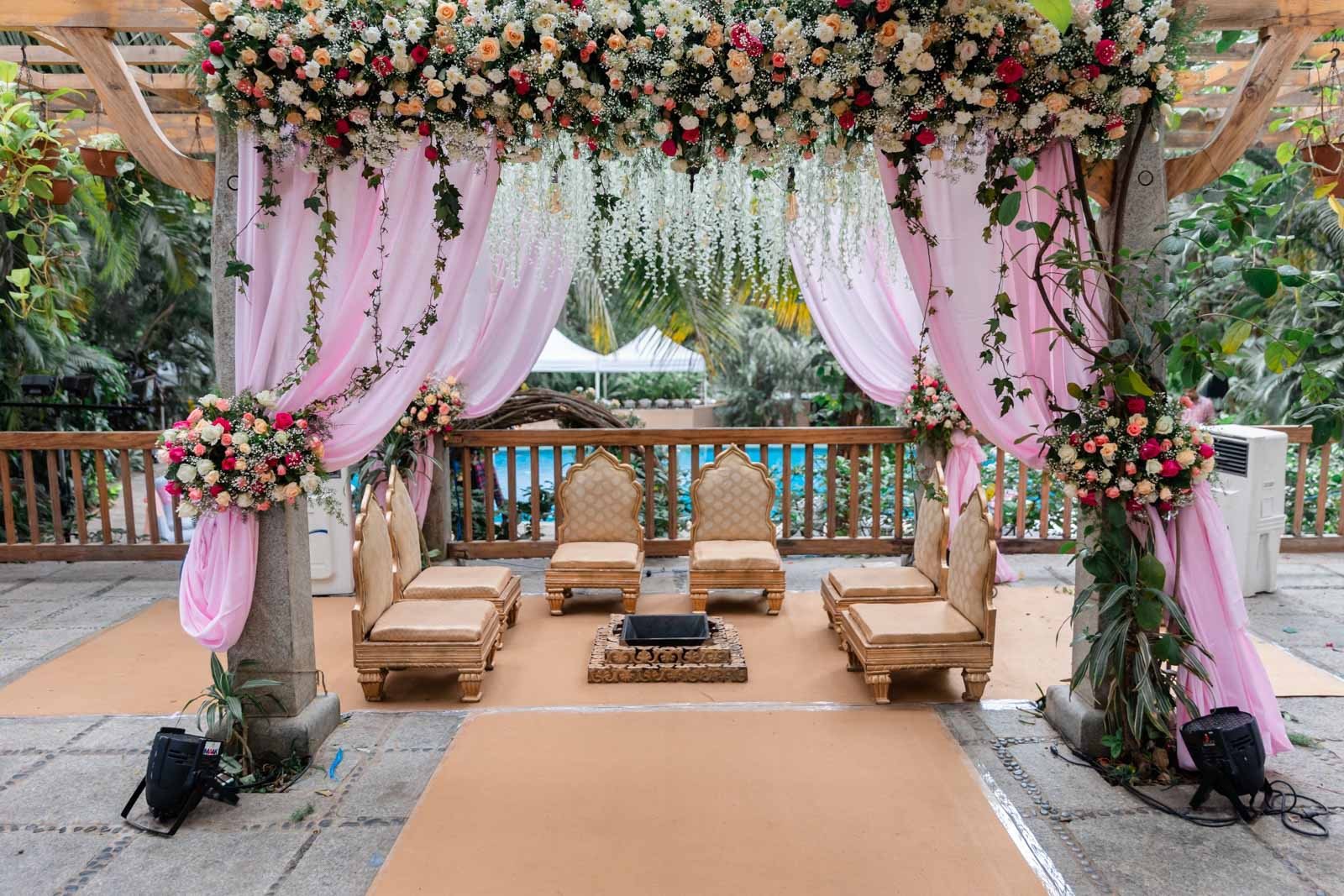Introduction
Indian weddings are vibrant, colorful, and filled with rich traditions. They are also a photographer’s dream—full of unique moments and cultural rituals that demand the perfect shot. If you’re an aspiring wedding photographer, you might wonder what it’s like to work behind the scenes at one of these grand celebrations. Let’s take you through a typical day in the life of an Indian wedding photographer, from early morning preparations to the final moments of the reception.
The Early Morning Rush: Getting Ready for the Big Day
The Preparation
The day begins long before the couple’s vows are exchanged. An Indian wedding photographer’s day starts early, often around sunrise, capturing the first moments of the day with candid wedding shots. Here’s what happens:
- Arrival at the Venue: Photographers arrive hours before the ceremony begins to set up and scout the venue.
- Equipment Setup: From cameras to lenses, tripods, and flash systems, everything needs to be ready. Multiple backups are crucial for a seamless experience.
- Lighting: Indian weddings often happen in venues with dramatic lighting, which requires adjusting the camera to handle everything from dimly lit temples to brightly lit outdoor celebrations.
Meeting the Couple and Understanding Their Vision
Before capturing any photos, it’s essential to have a conversation with the couple:
- Understanding Preferences: Discuss the couple’s preferences—whether they want candid shots, posed pictures, or a mix of both.
- Setting Expectations: Clarify which moments are a must-capture and the timeline for the day’s events.
The Pre-Ceremony Moments
Capturing the Bridal Preparations
One of the most emotional parts of any wedding day, especially in Traditional Indian weddings, is the bride’s preparation. It’s about capturing:
- Bride’s Attire, Makeup, and Jewelry: These details are often intricate, with traditional attire and jewelry that hold cultural significance.
- Emotional Moments: Documenting moments like the bride getting ready with family members or sharing a tearful moment with a loved one can add depth to your wedding album.
Groom’s Preparations
While the bride is being pampered, it’s important to capture the groom’s preparations too. This includes:
- Getting Ready Photos: The groom often has a less intense but equally meaningful preparation process, such as getting dressed in traditional attire and getting ready with his family.
- The Baraat: Capturing the groom’s arrival at the venue is a crucial moment in many Indian weddings, filled with music, dancing, and joy.
The Wedding Ceremony: Full of Rituals and Emotion
Documenting the Traditional Rituals
The Indian wedding ceremony is full of deep-rooted rituals, each requiring careful attention:
- Baraat: This is the groom’s procession to the wedding venue, often accompanied by dancing and music.
- Varmala: The exchange of garlands is a symbolic gesture and a key moment to capture.
- Pheras: The sacred rounds around the fire that bind the couple together in marriage.
Capturing Key Moments
Other important moments to photograph include:
- Exchange of Vows and Rings: These moments often come with intense emotion.
- Candid Family and Guest Shots: While the focus is on the couple, candid shots of family members can show the love and joy of the day.
Post-Ceremony and Family Portraits
Group Photos with Family and Friends
After the ceremony, family portraits are essential. These are often the most cherished images of the day:
- Posing with Family: While posed group photos can be stiff, creating a relaxed atmosphere can help make the photos more natural.
- Key Family Moments: Photographers capture moments like the couple with their parents, siblings, and other important relatives.
Bride and Groom Portrait Session
After the ceremony, it’s time for the couple’s portrait session. These photos are the ones that will grace their home for years to come. Here’s how photographers create stunning portraits:
- Romantic Shots: Find scenic spots and create moments that showcase the love between the bride and groom.
- Creative Ideas: Some photographers experiment with lighting, angles, and props to create unique and timeless images.
Behind the Scenes: Challenges and Fun Moments
Dealing with Unpredictable Situations
Wedding days rarely go as planned, and Indian weddings come with their own set of challenges:
- Delays and Weather: Photographers must be adaptable to any schedule changes or weather disruptions.
- Crowds: Indian weddings often have large guest lists, and capturing intimate moments in a crowded space can be tricky.
The Fun Side of Wedding Photography
While wedding photography can be demanding, it’s also a lot of fun:
- Teamwork: Collaborating with second shooters, videographers, and wedding planners can be a blast.
- Funny Moments: There’s always something unexpected—a funny guest, a wardrobe malfunction, or a candid moment that lightens the mood.
Conclusion: The Reward of Capturing Love
At the end of the day, the reward for a wedding photographer is seeing the joy their photos bring to the couple and their families. There’s nothing more fulfilling than capturing a couple’s love story and preserving it for a lifetime. Whether you specialize in Hindu wedding photography, Christian wedding photographers, or Muslim wedding photography, each wedding offers a unique and meaningful experience to capture, reflecting the couple’s traditions, love, and culture.










